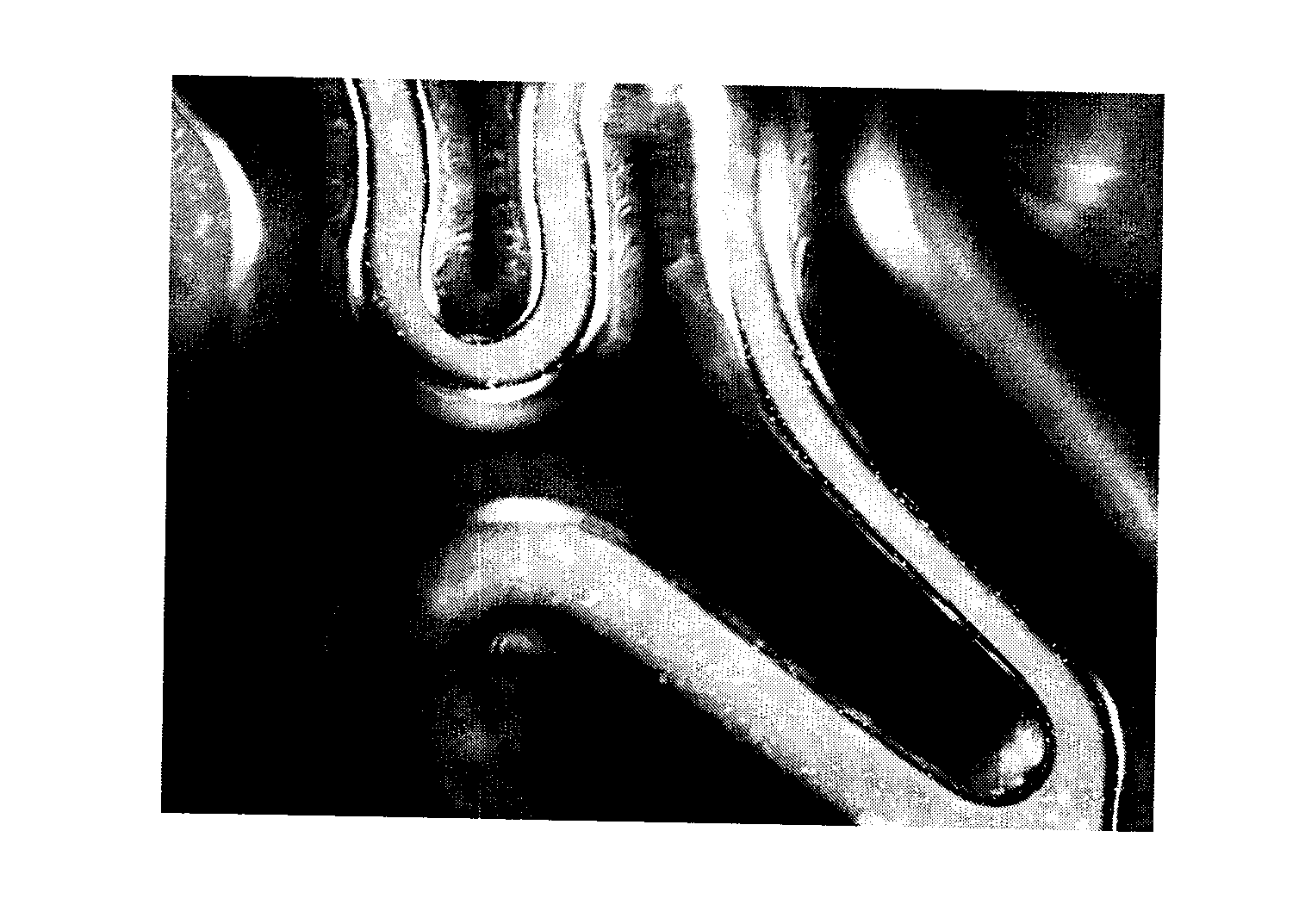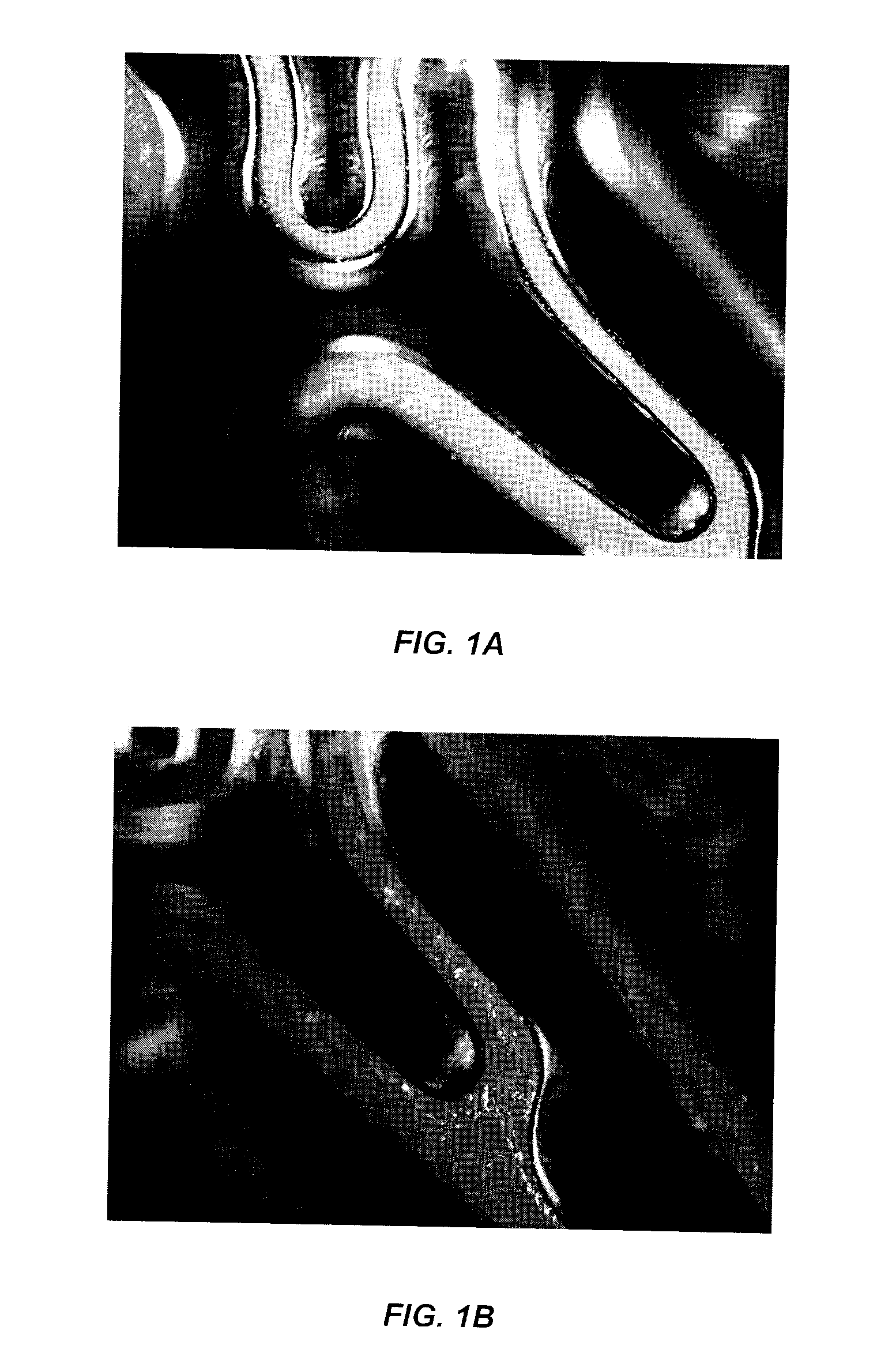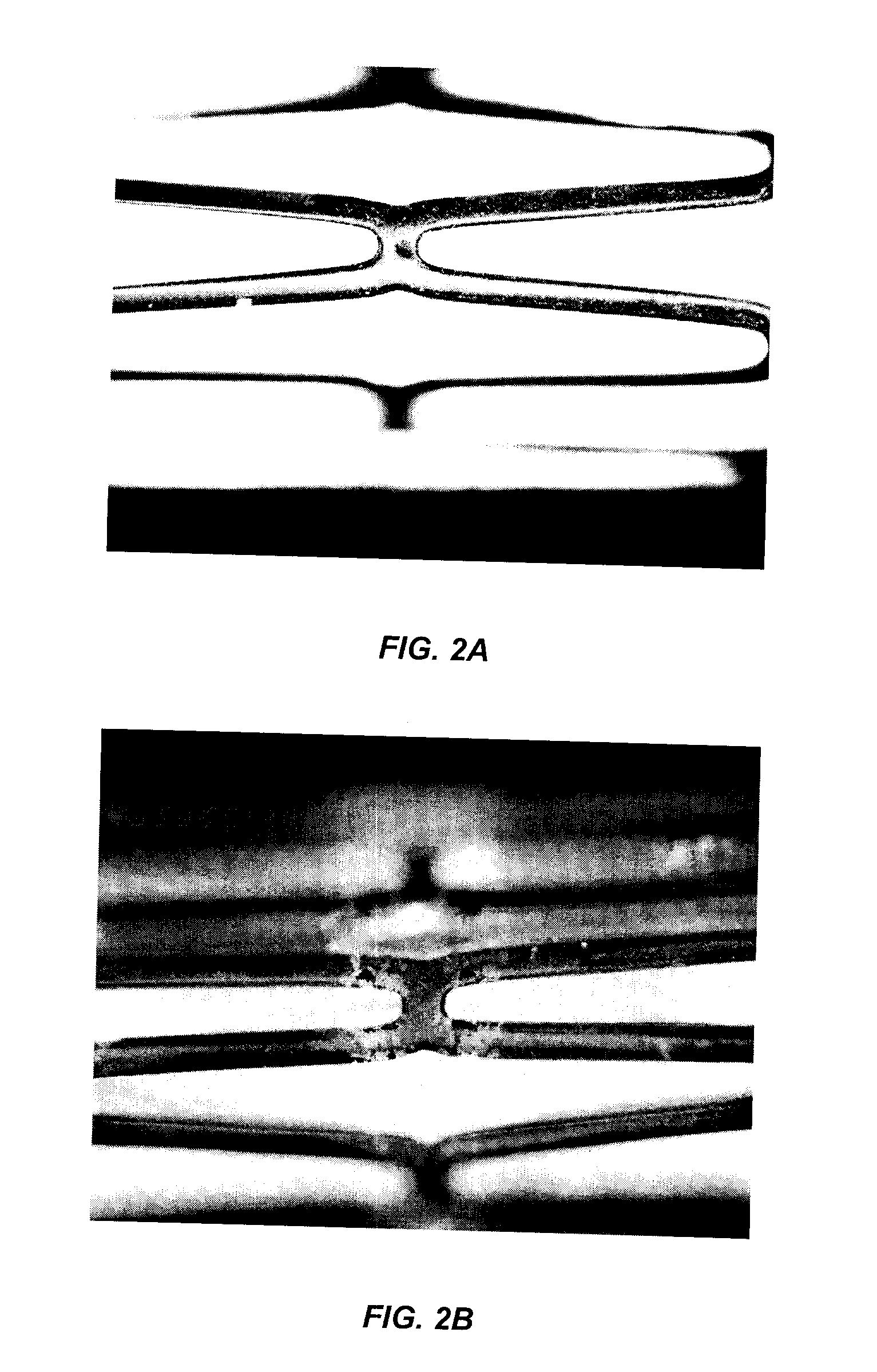Calcium phosphate coated stents comprising cobalt chromium alloy
a cobalt chromium alloy and calcium phosphate coating technology, applied in the field of medical devices, can solve the problems of non-elimination of restenosis, blood clots can be fatal, and the toxicity of retained drugs or non-degradable polymers,
- Summary
- Abstract
- Description
- Claims
- Application Information
AI Technical Summary
Problems solved by technology
Method used
Image
Examples
example 1
Control
[0039]This Example describes deposition of hydroxyapatite on a stent comprising a cobalt chromium alloy without the pretreatment process described herein. The hydroxyapatite deposition is also disclosed in Tsui, Manus Pui-Hung, “Calcium Phosphate Coatings on Coronary Stents by Electrochemical Deposition,” M.A.Sc. diss., University of British Columbia, University, 2006, the disclosure of which is incorporated herein by reference.
[0040]The stent used was a L605 cobalt chromium stent (cobalt-chromium-tungsten-nickel alloy, MIV Therapeutics, Inc.) measuring 19 mm in length and a 1.6 mm outer radius. The stent surface was electro-polished, then cleaned in ultrasonic bath, with distilled water and then with ethyl alcohol. FIGS. 1A and 1B are photographs of two different portions of the stent after the electropolishing method. From these photographs, numerous precipitates are visible on the surface of the stent.
[0041]Electrochemical deposition of calcium phosphate was performed with...
example 2
[0045]This Example describes coating a cobalt-chromium alloy stent after an acid-etching pretreatment.
[0046]A concentrated acid etch reagent was made by mixing 95-98% sulfuric acid and 36-40% hydrochloric acid in 1:1 proportion. A 25% acid etch working solution was made by diluting the 1:1 reagent with HPLC grade water (all % concentrations are volume / volume). The working solution was 4.5% hydrochloric acid, 12.25% sulfuric acid and 83.25% HPLC grade water. A L605 cobalt-chromium alloy stent was cleaned by sonicating in distilled water and then in ethyl alcohol, followed by rinsing with ethyl alcohol and air drying. The dried stent was immersed in 5 mL of the working solution in a capped pyrex test tube and gently agitated at 25° C. in a rotary water bath for 1 hour. The stent was removed, rinsed exhaustively in HPLC grade water and air dried. FIGS. 4A and 4B are photographs of the surface of the acid-etched stent. It can be seen that the precipitate formation on the surface finish ...
PUM
| Property | Measurement | Unit |
|---|---|---|
| pore diameter | aaaaa | aaaaa |
| time | aaaaa | aaaaa |
| time | aaaaa | aaaaa |
Abstract
Description
Claims
Application Information
 Login to View More
Login to View More - R&D
- Intellectual Property
- Life Sciences
- Materials
- Tech Scout
- Unparalleled Data Quality
- Higher Quality Content
- 60% Fewer Hallucinations
Browse by: Latest US Patents, China's latest patents, Technical Efficacy Thesaurus, Application Domain, Technology Topic, Popular Technical Reports.
© 2025 PatSnap. All rights reserved.Legal|Privacy policy|Modern Slavery Act Transparency Statement|Sitemap|About US| Contact US: help@patsnap.com



